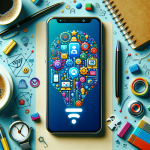
Exploring Smart Health Devices in 2025
Exploring Smart Health Devices in 2025
As we advance into 2025, the landscape of smart health devices is evolving rapidly. From smart watches to fitness bands and advanced wearables, these devices are not only enhancing personal fitness but are also focusing on medical-grade tracking to provide users with critical health insights.
Prerequisites
- A curiosity for technology and health.
- Understanding of basic health metrics (heart rate, sleep patterns, etc.).
- Interest in fitness and wellness trends.
The Importance of Smart Health Devices
The integration of technology and health has revolutionized how we monitor our well-being. Smart health devices provide:
- Real-Time Data: Continuous monitoring of health metrics such as heart rate, blood pressure, and oxygen saturation.
- Preventive Health: Early detection of potential health issues, allowing for timely intervention.
- Personalized Insights: Tailored recommendations based on individual health data, improving overall wellness.
Key Features of 2025 Wearables
In 2025, smart health devices are expected to feature:
- Advanced Sensors: Utilization of sophisticated sensors to track a wider range of biometrics, including hydration levels, stress indicators, and even glucose levels for diabetes management.
- AI Integration: Artificial intelligence will analyze health data, offering more accurate health predictions and recommendations.
- Interconnectivity: Enhanced compatibility with other smart home devices, healthcare systems, and telehealth services.
Types of Smart Health Devices
Several types of smart health devices are poised to dominate the market in 2025:
Smart Watches
Smart watches are transitioning from fitness trackers to essential health monitoring tools. They now feature
- Medical-grade ECG monitoring for heart health.
- Blood oxygen measurement capabilities.
- Integration with healthcare providers for seamless data sharing.
Health Bands
These lightweight, discreet devices focus on tracking fitness metrics:
- Daily activity levels, steps, and calorie counts.
- Sleep tracking with advanced sleep stage analysis.
- Heart rate variability for stress management.
Wearable Health Monitors
Dedicated wearables designed for specific medical conditions:
- Continuous glucose monitors for diabetes management.
- Wearable blood pressure monitors providing real-time readings.
- Smart clothing embedded with sensors for monitoring vital signs during physical activity.
Challenges Ahead
Despite the exciting advancements in smart health devices, several challenges remain:
- Data Privacy: Concerns about the security of personal health data and how it is used.
- Regulation: Ensuring devices meet safety standards for medical-grade usage.
- Adoption Barriers: Overcoming resistance among users to adopt new health technologies.
Troubleshooting Common Issues
Users may experience some common issues with smart health devices. Here are some troubleshooting tips:
- Ensure your device is fully charged if it fails to power on.
- Check for software updates regularly to enhance features and security.
- Reset the device to factory settings if it’s not syncing with apps.
Summary Checklist
- Understand the various types of smart health devices available.
- Be aware of the key features driving the 2025 market.
- Know the common challenges and how to troubleshoot common issues.
In conclusion, smart health devices in 2025 herald a new era of personalized healthcare, enhancing not only our lives but also our longevity. By embracing these advancements, we can gain greater control over our health, ensuring a well-informed approach to wellness.
For more insights on tech innovations, check out our article on Smart Contracts and Their Impact.














